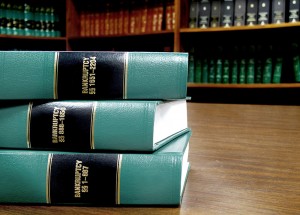- Home »
- Basics for Beginners »
- Dealing With Distress For Fun & Profit – Installment #8 – What Every Secured Creditor (And Its Lawyer) Should Know About Chapter 11
Dealing With Distress For Fun & Profit – Installment #8 – What Every Secured Creditor (And Its Lawyer) Should Know About Chapter 11
A written tour of business bankruptcy and its alternatives
 In our past few installments we’ve been approaching our topic in a more or less chronological manner, explaining what generally happens first, second, third, and so on. We think it useful to switch convention and spend this and the next few installments talking about things from the perspective of specific players. This time, we focus on the secured creditor.
In our past few installments we’ve been approaching our topic in a more or less chronological manner, explaining what generally happens first, second, third, and so on. We think it useful to switch convention and spend this and the next few installments talking about things from the perspective of specific players. This time, we focus on the secured creditor.
What/who is a secured creditor? Examples include (there are other possibilities):
- The holder of a real estate mortgage
- A bank with a lien on all assets
- A receivables lender
- An equipment lender
- The holder of a statutory lien
A secured lender may be the senior lender or it may be a subordinate lender; it may be oversecured, fully secured, or undersecured; it may have a long-term business relationship with the debtor and/or its principals, or the loan may be a one-shot deal; the amount owed may be very significant to the secured lender or it may constitute a minor matter; the secured lender may have made the original loan or it may have bought the loan from the originator.
The point is that even among secured lenders, where you stand is a function of where you sit, and one secured lender may sit in a very different place than another.
Can the Debtor Use a Secured Creditor’s Collateral During the Case?
The short answer is “yes, generally, at least at first.” The debtor is typically allowed to continue to use a secured lender’s collateral during the bankruptcy case. For example, if you have a mortgage lien on a building or a security interest in a machine, the debtor will be permitted to continue to use your collateral; however, you may be entitled to compensation for the loss of value caused by the use.
If a lender has a security interest in “cash collateral,” a debtor must have the secured creditor’s consent or a court order before use. Cash collateral includes both cash and cash equivalents, including the cash proceeds of hard collateral (e.g., cash in a bank account, the proceeds of accounts receivable, etc.).
A debtor will usually need access to cash after filing bankruptcy and, if so, will contemporaneously file an “emergency motion for authority to use cash collateral.” This sets the stage for the secured creditor and debtor to negotiate certain concessions by the debtor in exchange for the creditor’s consent to the use of its cash collateral. If the bargain seems reasonable, the judge may enter a stipulated order reflecting the parties’ bargain.
If the parties are unable to reach an agreement, a contested hearing will determine the debtor’s right to use cash collateral. The secured creditor must establish that the cash at issue is, in fact, its cash collateral. This requires the creditor to provide the court with competent evidence at the hearing, whereupon the debtor must prove that it can provide “adequate protection” to the creditor.
What Is Adequate Protection?
Adequate protection, described in Bankruptcy Code §361, can take on many forms, depending on, among other things, how great the risk is to the secured lender, what the cash collateral is being used for, and what types of protection the debtor is able to offer.
For example, where the primary collateral is accounts receivable, it is common for the lender to be granted a “replacement lien” on receivables generated post-petition if the debtor spends the proceeds of the receivables that are subject to the lender’s original lien. Such protection is significant because §552 operates to cut off any receivables lien as of the bankruptcy filing date. If the debtor continues to generate new receivables at the same or higher rate as it spends the proceeds of old (pre-petition) receivables, then the lender would be adequately protected.
If the debtor is using the proceeds of a lender’s “hard collateral” to preserve that hard collateral (e.g., rent receipts used to maintain an apartment building), such use is often considered adequate protection because the upkeep of the building benefits the lender as mortgagee.
If the secured lender has a reasonable “equity cushion” (that is, the value of the “hard collateral” substantially exceeds the amount of the secured debt) then that lender is likely to be deemed to have adequate protection. Why? Because if there is such an “equity cushion” the use of cash collateral is unlikely to present an unfair risk to the secured lender.
If a secured lender’s adequate protection proves insufficient to compensate it for a loss of collateral value during the case, the lender may be entitled to a “super priority” administrative claim under §507(b), which gives the lender priority over other “regular” administrative claims, and acts as a backstop protecting the secured lender. This backstop is consistent with §361(3), which provides that it is not adequate to simply give the secured creditor an administrative priority claim to the extent of any diminution in its collateral value
What Happens if the Lender’s Collateral Decreases in Value During the Case?
There are several ways in which the value of a secured creditor’s collateral might diminish during a bankruptcy case. Examples include market fluctuations and the debtor using the collateral in a manner that reduces the value. This risk is of particular concern to a secured creditor because the secured creditor is generally precluded from foreclosing on its collateral during the case. However, a secured creditor may be entitled to certain protections under the Code.
The concept of adequate protection applies when value of non-cash collateral declines. Bankruptcy Code §363(e)provides that, on request of a secured creditor, the court is to condition the debtor’s right to use (or sell or lease) collateral upon provision of adequate protection to the secured creditor. Similarly, §362(d)(1) allows the court to grant a secured creditor relief (allowing it to exercise remedies, such as foreclosure) if the debtor is unable (or unwilling) to provide adequate protection.
While the court may determine the form of adequate protection, it will not monitor a lender’s collateral value, nor should a secured lender rely on the debtor to offer adequate protection. Accordingly, if a secured creditor believes that its collateral value is declining post-petition, it is incumbent on the creditor to file a motion for adequate protection (or for relief from the automatic stay).
A few more points are worth making on this issue. First, you do not get compensated for delay caused by the automatic stay. Instead, you must affirmatively prove that you are suffering a post-petition decline in collateral value.
Second, a significantly over-secured creditor (i.e., collateral value exceeds debt amount) is unlikely to be awarded adequate protection, even if its collateral value is declining. Courts sometimes refer to a decline in the margin between collateral value and debt amount as “erosion of the equity cushion.” However, as the collateral value sinks closer to the debt amount, the prospects for adequate protection improve. A secured creditor need not wait until it is under-secured to ask for (or receive) adequate protection.
Finally, collateral value is not always obvious. The value of collateral like an automobile or shares of a public company is easily discernible. But if your collateral consists of real estate or the assets of a private company, you should plan to retain an expert to provide testimony to establish collateral value.
To read other installments in this series, click here.
For a great discussion on insolvency, we recommend When a Customer Becomes Insolvent Webinar and Buying Distressed Assets and Securities Webinar. You can also learn about federal equity receiverships here, and get advice on what to do when your business is struggling here.
About George Kuney
Prior to joining the faculty of the University of Tennessee College of Law, where he is now an emeritus professor, in 2000, Professor Kuney was a partner in the San Diego office of Allen Matkins Leck Gamble & Mallory LLP where he concentrated his practice on insolvency and reorganization matters nationwide. Before that he received…

About Jonathan Friedland
Jonathan Friedland is a principal at Much Shelist. He is ranked AV® Preeminent™ by Martindale.com, has been repeatedly recognized as a “SuperLawyer” by Leading Lawyers Magazine, is rated 10/10 by AVVO, and has received numerous other accolades. He has been profiled, interviewed, and/or quoted in publications such as Buyouts Magazine; Smart Business Magazine; The M&A…

Related Articles
PUBLIC NOTICE OF CHAPTER 11 SALE: Solar Biotech, Inc.
Bankruptcy Considerations in a Collections Action
What Secured Lenders Should Know If Their Borrower Files for Bankruptcy
Selling Distressed Assets: The Assignment for the Benefit of Creditors Alternative
Chapter 11 Reporting Requirements: How Debtors Must Stay Transparent
Dealing with Corporate Distress 07: Chapter 11 is Not Always the Answer: Strategic Alternatives For and Against Distressed Businesses
